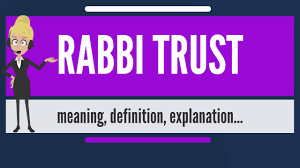There are numerous ways to roll over your employer-sponsored 401k retirement plan if you’ve quit your employment. Choosing the appropriate place to transfer your funds can save you tens of thousands of dollars, or it can cost you the same amount if you make the wrong choice. You might significantly reduce your investment costs by rolling over a 401k with high-fee investments into an IRA with lower-cost investment options or into the 401k plan of your current employer. This article explains how to rollover 401k to an IRA and to a new employer. We also explained the rollover 401k to IRA consequences you might face when rolling over your 401k. Let’s dive in!
What Is 401K Rollover?
With a 401k rollover, you can move the funds from your old employer’s retirement plan to an IRA or your new employer’s retirement plan. And usually, there won’t be any tax to pay on the amount you send.
How to Start Your 401K Rollover
The following are the steps to take when starting your 401k rollover to an IRA
#1. Set Your Desired Account Type
Which type of account you roll your money into depends heavily on your own investment goals and the alternatives accessible to you. Consider the following questions as you weigh your options:
- Would you prefer to have someone else invest the money for you, or would you rather do it yourself? An IRA could be a smart choice if you like to handle things on your own. But if you’d rather have someone else handle your IRA investments, robo-advisors can tailor a portfolio to your specific requirements. A rollover into your current employer’s 401k plan is an alternative for “do-it-for-me” investors.
- Does your current 401(k) match or improve upon the investment options and potential returns of your previous 401(k)? Make sure your new 401(k) is a better fit than your old one before deciding to make the switch and make a rollover. If it isn’t, then transferring the funds to an Individual Retirement Account (IRA) where they can be invested in virtually any publicly traded security makes a lot of sense. If that isn’t the case, maybe you should just stick with your existing 401(k).
- Do you have access to financial advisors through your current 401(k) plan? It might make sense to combine your existing 401(k) with your new one in this case. If you open an individual retirement account (IRA), you’ll be responsible for making all investment decisions or paying someone else to do so.
The first step in transferring funds is determining the best type of account for your needs. Rolling over to an existing 401(k) may be the best option for people who lack the knowledge and experience to invest on their own, while an IRA may be the better choice for those who want to take charge of their retirement savings.
#2. Designate a Recipient for the Funds
When you transfer funds from your previous 401(k) to your new one, you can see exactly where your money is going. However, if you plan on transferring the funds to an IRA, you will first need to open an IRA account with a financial institution.
Consolidating your 401(k) into an existing IRA, or opening a new IRA to hold the funds, is an option if you already have one.
#3. Register for an Account and Research 401K Rollover Procedures
Opening an IRA account is the next step after selecting a suitable brokerage or robo-advisor. Once it’s active, you can start the process of transferring funds from your old 401(k) plan.You should get in touch with your new brokerage or robo-advisor to find out what steps are necessary to complete a 401k rollover. You should stick to their guidelines to a T. Get in touch with your new 401(k) plan administrator for guidance on how to complete a rollover.
If your 401(k) provider is sending you a check, for instance, your IRA custodian may have specific instructions for how the check should be prepared, including your IRA account number. Again, make sure to strictly adhere to the guidelines to avoid any unnecessary hassles.
#4. Start the 401K Rollover Procedure
The 401k rollover process will require paperwork and possibly some communication with your service providers. There are a few ways to transfer funds from your previous provider to your new one, but a direct rollover is the most efficient. The money from your 401(k) will be transferred directly into your new account without any involvement on your part. Make sure the check isn’t written out to you by indicating a direct rollover. Withdrawals prior to age 59 1/2 are subject to a 10% early withdrawal penalty in addition to the 20% tax withholding that may be triggered.
#5. Move Swiftly
You have 60 days from the date you receive your retirement plan payout to deposit it into a qualifying account if you are rolling it over. If not, it will be considered a taxable occasion. Once again, the procedure for transferring funds may vary by financial institution. The 401(k) plan administrator can either mail you a check or make a wire transfer to the financial institution where you’ll be opening your IRA. You need to make arrangements for any incoming checks to be sent to your new account. Get moving ASAP.
401K Rollover to a New Employer
Leaving one job for another means deciding what to do with the 401(k) funds you’ve accumulated at your former employer. You can choose to do nothing, transfer it to a new employer’s plan, or move it to an individual retirement account (IRA). Hereis how to rollover your 401k to a new employer:
#1. Get in Touch with the New Plan’s Sponsor
The first thing to do when enrolling new employees in a retirement plan is to speak with the plan sponsor or human resources manager. You should inquire with the plan sponsor about whether or not the ability to transfer an existing 401(k) is available to new hires, as not all businesses accept such transfers. You will need to complete 401k rollover paperwork if your prospective company allows 401(k) rollovers.
#2. Fill Paperwork
The employee’s identity (name, address, account number, SSN, date of birth, etc.) will need to be disclosed to the new plan sponsor. Information about your previous 401(k) plan, including your total retirement savings, investment choices, contribution type, etc., must also be provided. The plan sponsor will receive the paperwork back once it has been filled out.
#3. Make a Call to the Former Plan Sponsor
After receiving 401k rollover instructions from the new plan sponsor, you should submit them to the previous plan sponsor for final approval. You should also include the updated 401(k) account information and postal address.
#4. Funds Transfer
Once the transfer of 401(k) assets has been approved by both plan sponsors, the former plan sponsor will begin the process. Both direct and indirect rollovers are available for transferring 401(k) funds. An electronic transfer of retirement funds is what constitutes a direct rollover from one plan to another. The whole balance can be transferred with a tax-free and penalty-free rollover.
An indirect rollover is an alternative to a direct rollover in which the previous plan administrator issues a check directly to the account holder. You have 60 days to deposit the check into your new 401(k) account. For tax purposes, your former company will withhold 20% of the funds, and you’ll need to deposit the full amount (including the withholding) within 60 days.
Why You Need to Rollover 401k to a New Employer
Since you will no longer be contributing to your old employer’s 401(k) plan, you may want to look into rolling over the funds to your new company’s retirement program. You should rollover your 401k to your new company’s retirement plan for the following reasons:
The 401(k) account you open will incur maintenance costs on a regular basis. 401(k) expenses might include things like management costs and the cost to retain records. These costs are charged annually as a percentage and can eat up to 3.5 percent of your retirement fund. You lose out on compound interest on interest profits because of these expenses. Consolidating retirement assets through a 401k rollover also helps you pay less in management costs.
#2. Hectic to Manage Multiple Accounts
Managing several 401(k)s from previous employment may be a hassle, and it’s easy to lose track of some of your most valuable retirement assets as you climb the corporate ladder. Your retirement savings will be safer if you combine all your separate 401(k) plans into one.
#3. Make a Choice about Your Financial Investments
You should rollover your 401(k) to your new employer’s retirement plan if that plan has a wider range of investment options and the potential for higher returns. Your 401(k) options will be restricted to those predetermined by your former company if you quit your job. It’s possible that the 401(k) plan at your new job will give you access to a broader range of investment opportunities suitable to your needs.
Rollover 401K to IRA Consequences
The following are the rollover 401k to IRA consequences:
#1. A 401(K) May Offer Benefits That an IRA Doesn’t Have
If you retain your retirement savings in a 401(k), you may be able to take the funds at age 55 without paying the 10% early withdrawal tax that applies to IRAs.If you leave your job and get payments from your 401(k) in the year that you turned 55, you won’t have to pay the early withdrawal penalty. In an IRA, where a 10% penalty applies to withdrawals made before age 59 1/2, this loophole is not applicable.
#2. You Can’t Take a Loan from an IRA, as You Can with a 401(K)
You can borrow money from your 401(k) plan in several cases. While it’s not a good idea to tap into your retirement savings, having the ability to do so could be helpful in a need. However, a 401(k) loan is not available if you move your money into an IRA instead. If you want to keep the option to take out loans from your retirement account open, you might roll over your previous 401(k) into your new one.
Advantages of Rolling Over Your 401K
The following are the advantages of 401k rollover:
#1. Your 401(K) Accounts Can Be Consolidated
Having multiple 401(k) accounts is common, especially if you frequently switch jobs. It may be more challenging to make deliberate choices if you have a large number of accounts. Having your retirement savings in one place can make it easier to keep track of everything.
#2. An IRA Offers You More Options for Investments
You can only make investments and open accounts in your 401(k) that the company allows. You may be able to diversify your investment options with an IRA. A traditional individual retirement account (IRA) may give you access to investment options like stocks and bonds that your company’s 401(k) plan doesn’t provide.
Unfortunately, your previous employer’s 401(k) plan is no longer open to contributions from you. However, if you transfer the funds to a traditional IRA, you can continue to contribute to that account each year up to the yearly limit. The rules for making IRA contributions must be followed.
#3. You Can Take the Account Wherever You Desire
If you already have a financial advisor or financial planner but want to switch, you can take your IRA funds with you. Or perhaps you want all of your money to be managed by the same brokerage as the rest of it.
Direct Rollover vs. Indirect Rollover: Which One Is Better?
Once you’ve made up your mind to move funds from one account to another, you can choose between two rollover methods: a direct rollover or an indirect rollover. A direct rollover is the optimal choice in every situation. And here’s why. With a direct rollover, you can move the funds from one retirement account, such as a 401(k) from a previous employer, into another retirement account, like an IRA. You avoid paying taxes or penalties on the money being moved because you, the account holder, never see it.
Direct rollovers are simple, but there’s no reason to take the extra risk involved with an indirect rollover. With an indirect rollover, you receive the funds first and then deposit them into your new account. The difficulty is that you only have 60 days to move the money into a new retirement plan. Taxes and penalties may be imposed otherwise.
Can you now see why direct rollover is required? There’s no reason to run the risk of a high tax and penalty bill from an indirect rollover.
Do I Need to Rollover My 401k to a New Employer?
You are not obligated to rollover your 401k to your new company’s retirement plan. The transfer to an individual retirement account (IRA) is optional as well. If your 401(k) at your former job has at least $5,000 in it, you can leave the money there.
How Long Do I Have to Rollover My 401K from My Old Job?
There is no time limit on how long you can keep money in a 401(k) from a previous job. When you change jobs, you have the option of transferring those savings to an IRA or the retirement plan of your new company. However, the IRS states that you only have 60 days from the date you get a retirement plan distribution to roll it over into another plan or an IRA. This is a massive mistake, so please don’t do it if you want to save your old 401(k) funds. Otherwise, you’ll have to pay taxes and a penalty for withdrawing money too soon.
What Are the Rules for 401K Rollover?
You can avoid paying taxes on your 401(k) assets if you move them to an IRA, but you must do it within 60 days. Transferring funds from a standard 401k rollover to a Roth IRA, however, will result in tax penalties.
Is It Good to Rollover Your 401K?
Your earning potential can be increased by rolling over your 401(k) to an IRA since it offers more investment options, cheaper fees, simpler communication with your financial advisor to make investment adjustments, and the possibility of rolling over to a Roth IRA.
How Do I Withdraw Money from My 401K?
You can start making penalty-free withdrawals from your 401(k) account as early as age 59 1/2 (and in some situations, age 55). Getting a withdrawal is as easy as contacting the plan administrator or logging into your account online.
Can I Cash Out My 401K if I Get Fired?
All of your 401(k) savings are yours to keep if you’re laid off. Your eligibility to receive employer contributions is conditional on your length of service. If you leave your job before all employer contributions have vested, you will get nothing.
What Happens if You Forget to Rollover Your 401K?
If you don’t transfer your old 401(k) to a new employer’s plan and your balance drops below the minimum amount required to keep the account open, your long-term retirement investments may be converted into cash, regardless of whether you want this to happen.
Final Thoughts
A 401k rollover to an IRA can give you more flexibility with your savings if you’ve recently switched to a higher-paying job. With a rollover IRA, you can consolidate all of your previous 401(k) plans into a single retirement savings account.
You have more control over your retirement savings in an IRA than in a 401(k) because you get to choose the investments you make and the percentage you allocate to each type of security. If you expect your retirement income to be greater than your present income, you may want to consider converting your IRA to a Roth IRA.
Related Articles
- 401(K) ROLLOVER TO IRA: Everything You Should Know
- CAR TITLE LOANS: 11 Alternatives to Raising Cash
- SMALL BUSINESS FUNDING: Top New 15+ Options in 2023 (+ Free Tips)
- 401k INVESTMENTS: Meaning, How to Invest, Companies & Best Investments
- HOW TO ROLL OVER A 401K: How to Roll Over to New Employer, IRA & Best Place to Do It





